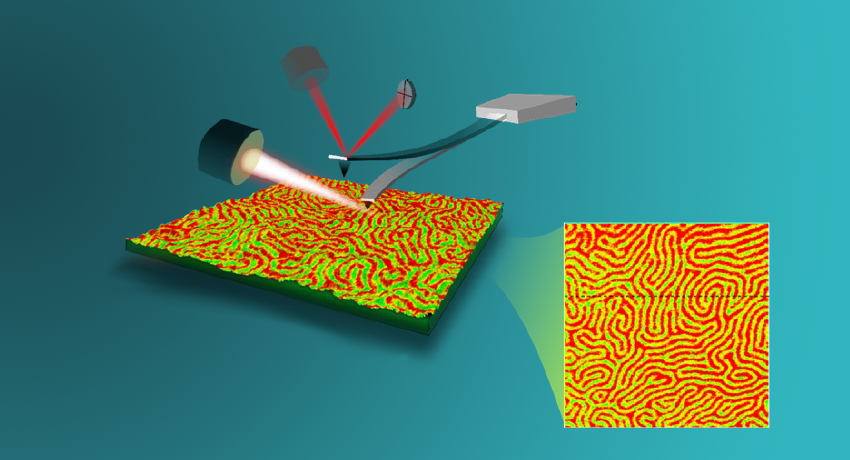Infrared (IR) spectroscopy is useful for the identification of both organic and inorganic compounds. However, the best lateral resolution achieved through standard IR techniques is > 10 microns. A new atomic force microscopy (AFM) technique now enables the detection of IR spectral response with a lateral resolution down to 10 nm. This detection is performed using a tunable IR laser and measuring changes in surface forces as a result of IR absorption in the sample via the AFM cantilever deflection.
Technique Advantages
- IR spectroscopy with a lateral resolution down to 10 nm
- AFM-IR provides compound specific spectral fingerprint
Bruker Dimension Icon-IR
Two tunable IR laser sources
- QCL laser: 780 to 1810 cm-1
- OPO laser: 2700 to 4300 cm-1
AFM-IR modalities include (all have phase lock-loop control):
- Contact AFM-IR
- Resonance Contact AFM-IR
- Tapping AFM-IR
- Surface Sensitive AFM-IR (AFM feedback is contact mode)
- No phase lock-loop control for SS AFM-IR
Stage supports samples up to 150 mm diameter
Scan types include:
- IR spectral scan mode (single point, line and/or array scans with site specific precision using MiroView)
- AFM-IR maps (acquire AFM scan at specific IR absorption band)


